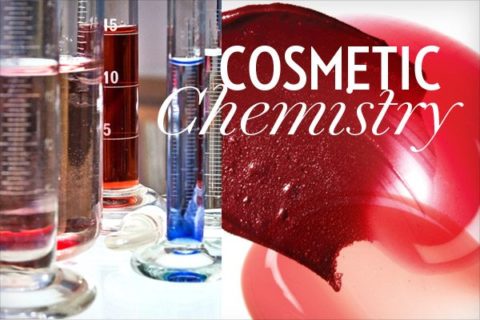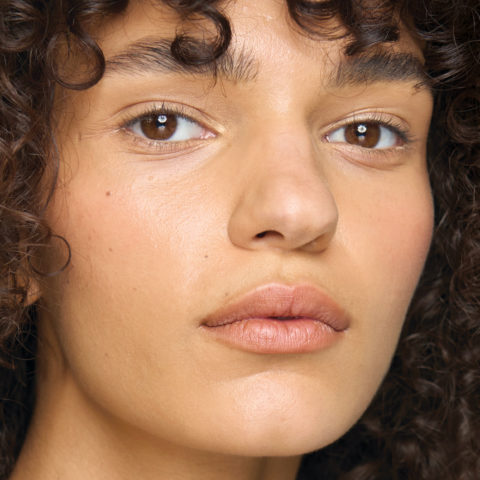Lab Test: 3 cosmetic chemists who are changing the beauty landscape with eco-friendly ingredients


By Janine Falcon
See 8 all-natural beauty products to try now »
Nature’s whimsy can be utterly charming—like sunshine when it rains. Whimsy is less than charming, however, when it comes to crafting high-quality, high-performance skincare and cosmetics from natural ingredients. Synthetics win in terms of stability and reliability over plant-based products that lack quality controls. But despite the complexities involved in formulating with naturals, more and more cosmetic chemists are enjoying the creative challenge. Our payoff is more—and better—eco-friendly beauty products we want to use.
The Custom Manufacturer
Mark Rival developed one of Canada’s better-known natural skincare brands—though its name can’t be revealed as the custom-formulation industry is highly competitive and secretive. The president and chief formulator for Leslie Cosmetics, an Ontario custom manufacturer of prestige personal-care products, Rival’s work with that brand and the success he’s watched it achieve have profoundly affected how he formulates overall. Consider him the stealth game-changer, steering skincare in a more natural direction one client at a time. “It’s convinced me to look into alternative raw materials, natural and certified organic alternatives for all new products,” he says.
A chemist for 25 years, Rival has worked extensively with cutting-edge synthetics, but in the past few years he has honed his use of natural ingredients. Now, as far as he’s concerned, natural alternatives to components such as silicone are key to modern prestige anti-aging skincare that works and nourishes the skin. He often chooses green ingredients, even for clients who aren’t doing natural product lines.
Rival was trained by his grandfather, Leslie Kelenyi, a civil and chemical engineer who founded the lab in the 1960s. Kelenyi established himself with the invention of an automotive rust remover for Canadian Tire, but his real passion was and still is skincare. “At the time, he was using old-school formulations, creating a blend of natural lipids and stearic acid as a pleasing base. We’re seeing that come full circle in the industry,” says Rival. “My grandfather was forever reinventing the wheel when it came to cosmetics, and he constantly researched new and innovative raw materials, which at the time included the synthetics commonly in use today. He also blended and pressed his own botanical oils and extracts; we use those recipes today.”
Over the past few years, Rival has been challenging his suppliers to source better natural ingredients, and as a result he has seen a huge increase in the variety of new natural materials. Rival has already removed a number of synthetics from his stock of raw materials; instead of sodium lauryl ether sulfate, a foaming agent, he uses corn-based decyl glucoside and boosts foam with coconut-derived agents. He works with natural beeswaxes, emulsifiers, cocoa butters and shea butters, and advises clients to avoid parabens, phthalates, sulfates and silicones. “If you don’t need it and you can find alternative methods, why not do that?” he says. “I’ve developed a nice preservation system that uses mild preservatives. And you can get a great texture with xanthan gum to give you slip and feel—you don’t have to have silicone in the product.”
Rival’s mandate to replace synthetics with natural and organic materials has as much to do with consumer demand as it does with his personal preference. “I make very high-end, efficacious products. That’s my niche,” he says. “But I feel responsible for the end user, so I move any new clients toward greener products.”
The In-House Lab
How did we heat leftovers before microwaves? If you have to stop for a second to think about it, you know how a new research-and-development team at Burt’s Bees felt eight years ago, when the natural beauty industry was still in its infancy. With a combined background at Chanel, L’Oréal, Avon, Elizabeth Arden and Revlon, the chemists were experts with advanced techniques and exciting new synthetic materials. But when it came to working with natural ingredients, they quickly realized they were out of their depth.
“We tried to put some emulsions together, [like] the beeswax-borax combination that was the old way of doing an emulsion, and we couldn’t get anything to be stable,” admits Celeste Lutrario, vice-president of global research and development. “We had no idea what to do. The rule was you couldn’t use anything synthetic, and everything was failing.”
Lutrario placed production on hold for six months while her department put itself through a natural-products bootcamp: “How did Elizabeth Arden make her first lipstick? How did people make products in their kitchens?”
The key for Burt’s Bees was stepping outside cosmetics manufacturing for inspiration. Surprise: they found it in food items like all-natural salad dressing and mayonnaise. “They had to build emulsions so they couldn’t break,” explains Lutrario. “The cosmetics industry had none of those ingredients, whereas the food industry did. So we went there first.”
Senior chemist Abena Antwi says formulating almost exclusively with natural ingredients requires much more creativity. Engineered raw materials simplify the process: Chemists can select from a catalogue of synthetic ingredient variations, such as 10 different grades of silicone, each designed to deliver a desired texture. “When it comes to natural skincare, you have to do a lot of experiments with different oils, different gums and different processing to achieve the aesthetic you want,” Antwi explains. “I use my cooking skills when formulating. How many oils? Can I add sunflower oil? Can I add avocado oil to achieve a bit of thickness? Or can I add coconut oil for something light? I love to cook; that makes my job a little easier.”
Still, in 2009, when Antwi created Burt’s Bees Baby Bee Multipurpose Ointment—an all-natural salve that looks, feels and functions like petroleum jelly—getting the formula right took “a year and a half of just playing around with different waxes, oils and butters.” On top of that, successfully executing a small recipe in a lab is completely different from producing it on a massive scale in a manufacturing facility. The product was nearly scrapped because the production team wasn’t sure it could be done, but each phase surpassed their expectations. “Everybody became passionate about it since it was very different from the norm,” says Antwi. “I’m glad we did it.”
The Artist
“I come to this from a lifetime of being in love with cosmetics,” says Kristine Keheley, a private-label formulator and co-founder of Vapour Organic Beauty. A 70-per-cent organic line crafted with minerals, vitamins and plant oils, Vapour has raised the bar for natural skincare and makeup with impressive textures and complexion-flattering shades.
Keheley is part of a new generation of natural-beauty chemists who have never worked with synthetics. She’s been formulating for more than a decade, and working with certified organic food-grade ingredients for six years. She’s designed natural lines for many other brands sold in Whole Foods and Sephora, yet she’s not actually a cosmetic chemist. A professional artist and painter based in New Mexico, she has a double major in classical archeology and art history and a fine-arts background that she mines for inspiration. “My whole life I’ve painted in glazes, which are transparent veils of colour. The layer of colour that your eyes see is an interaction of perhaps 20 layers of paint before that,” says Keheley. “When I think about creating a new lip gloss, lipstick, blush or foundation shade, I’m thinking about the life that goes on in the skin underneath the product.” She’s also thinking about water, or a lack thereof—Keheley’s formulas are anhydrous (made without water) so there is no need for preservatives.
Keheley co-founded Vapour in 2009 with lab owner Krysia Boinis after makeup pro Eric Sakas tracked the two of them down, intrigued by a foundation prototype Keheley had made for another client. “I want our products to stand next to the highest level of prestige cosmetics in terms of performance and colour richness,” Keheley says. “My first challenge is to make a fantastic product. I will use more expensive ingredients in Vapour than anybody else would let me use.”







